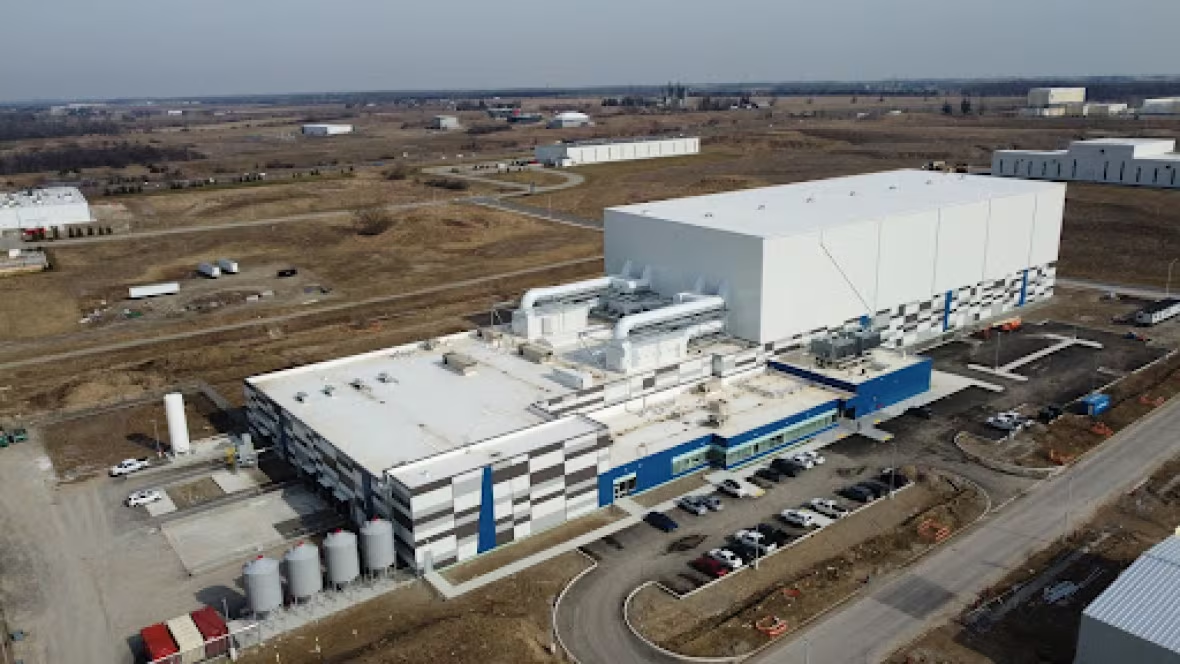Massive cricket-processing facility comes online in London, Ont.
Company hopes to produce 13 million kg of cricket protein annually, selling mostly to pet-food market

In the next few days, the first farmed insects will arrive at a new massive cricket-processing facility in London, Ont.
At full capacity, Aspire Food Group's facility is expected to house four billion crickets and produce 13 million kilograms of the insect each year at what's believed to be the biggest cricket-specific processing facility in the world.
This week, the federal government announced it was investing up to $8.5 million into Aspire's London facility.
The plant comes with lofty goals. The chief executive officer hopes it will help tackle the planet's food insecurity problems.
"Crickets have this incredible ability to convert what they eat into protein biomass," said Mohammed Ashour, co-founder of Aspire Food Group, who for the last six years has operated a research and development facility in Austin, Texas.

Crickets can produce protein much more efficiently and with a fraction of the amount of food, water and land needed by other protein sources, Ashour said.
Most of what the plant in London will produce will feed the pet-food market, he said.
"Pets consume, pound for pound, more meat than their owners," he said. "That's because every single meal of every single day consists of about 30 per cent meat."
The London facility currently employs 45 people and hopes to hire 55 more within 12 months.
Insects an 'ancient' food source
Ashour launched his idea to breed and farm insects for food in 2013, when he was a medical student at McGill University. He grew up in Montreal and now calls London home.
Along with a handful of his classmates, Ashour's team won the $1-million Hult Prize, which challenges young entrepreneurs to provide a solution to some of the world's most pressing issues.
"We have a massive growth in both population and appetite for protein, while at the same time we're seeing a significant reduction in arable land and resources to produce food.

"Our longer-term vision is to make sure that this is a protein source that can be available and affordable to genuinely address food insecurity in many countries around the world," he said.
"I think it is so exciting that we are at a moment in history where we're really re-evaluating our food systems in general, and exploring new ways of exploring protein and more efficient ways of producing protein," said Evan Fraser, director of the Arrell Food Institute at the University of Guelph in Ontario.
A third of the world's greenhouse gases come from food, said Fraser.
"Unfortunately, protein and livestock agriculture is the big player in those negative problems."
According to Fraser, there are a billion and a half cows on the planet.
"That number does have to come down if we're going to meet the needs of the future sustainably."
Right now, beef still provides the biggest dose of protein, said Fraser. But with more research and breeding, there's no doubt the nutritional value of crickets will soon catch up, he said.
"Insects are widely consumed in many countries around the world," said Ashour. "In the vast majority of the world's countries, different types of insects are consumed quite avidly.
"We're simply reconnecting one of the most ancient food sources in the world to people around the world today, but in a way that is produced at scale and at a cost and at a quality that is a lot more amenable to our current food production system."

